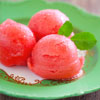Cut vegetables and fruit into cube sized pieces. Mix with the apple cider and spices. Butter an ovenproof cooking casserole and put vegetables and fruit into it and cover. Bake in the oven at 325 F for 50 minutes. Remove cover and add more cider if necessary. You need enough liquid to keep it from burning, but not too much. Return to oven and bake for at least 30 minutes more. The longer you bake it, the more the flavours blend. I bake it for about an hour and 20 minutes at 325 F. This comes out so sweet it could be either an accompaniment for a meal or a dessert. If used for main meal, serve on salad with chicken, pork or turkey. Makes 4 servings.



